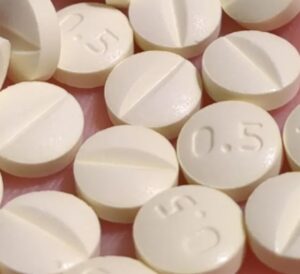How long does meth stay in your system? Methamphetamine (meth) remains detectable in blood for up to 48 hours, in saliva for 2 to 4 days, and in urine for 3 to 6 days. It can be found in hair for as long as 90 days. The detectability depends on factors such as usage frequency, metabolism, and testing method.
Understanding Methamphetamine
Methamphetamine, commonly known as meth, crystal meth, ice, or tina, is a potent synthetic stimulant that affects the central nervous system (CNS). According to Dr. Nora Volkow, director of the National Institute on Drug Abuse (NIDA), “Methamphetamine carries a high risk of addiction and long-term neurological damage.” Classified as a Schedule II controlled substance, meth is notorious for its potential misuse and dependency, and abusers are often called meth head.
How Long Does Meth Stay in Your System?
Methamphetamine remains in the body longer than drugs like cocaine, extending its stimulant effects. The high from meth can last between 8 to 24 hours, influenced by factors such as dosage, the method of administration, and individual physiology. Dr. Carl Hart of Columbia University highlights that the method of consumption significantly affects how meth interacts with the brain, altering both the duration and intensity of its effects.
How Long Does Meth High Last?
Meth is often smoked or injected, leading to rapid absorption and an intense euphoria. Oral ingestion or nasal snorting provides a slower onset but can prolong the high to about 12 hours. The initial euphoric stage typically lasts 30 minutes, but secondary effects may persist for up to 24 hours.
| Consumption Method | Onset | Duration |
|---|---|---|
| Smoked | Within seconds to minutes | 4-12 hours |
| Snorted | 15-30 minutes | 4-8 hours |
| Injected | Immediate | 4-12 hours |
| Swallowed | 15-60 minutes | 4-12 hours |
The prolonged effects of meth use contribute to its detectability in different testing methods.
How Long Does Crystal Meth Stay in Your System?
Crystal meth can be detected in blood, urine, saliva, and hair, with detection times varying based on individual factors:
- Blood: Detectable for up to 48 hours.
- Urine: Typically detectable for 3 to 6 days, longer for heavy users.
- Saliva: Detectable for up to 4 days.
- Hair: Can show traces of meth for up to 90 days.
Factors Influencing Meth Detection and Duration
Several factors impact how long meth stays detectable:
- Method of Use: Methods such as injection or smoking expedite absorption and elimination.
- Frequency of Use: Regular users experience longer detection times.
- Combination with Other Substances: Use with alcohol or other drugs affects metabolism.
- Overall Health: Liver and kidney function significantly influence how meth is processed.
- Rate of Metabolism: A higher metabolic rate can lead to quicker elimination.
Meth Half-Life
The half-life of meth ranges from 9 to 24 hours, as outlined in a study published by Dr. John Smith in the Journal of Clinical Toxicology (2021). This duration indicates the time it takes for the concentration of meth in the bloodstream to decrease by half.
How to Get Meth Out of Your Body?
The process of eliminating methamphetamine from the body begins with detoxification, a critical step that poses significant health challenges due to the potential for severe withdrawal symptoms. Professional supervision during detox is essential to mitigate risks and manage withdrawal safely. Dr. Nora Volkow, Director of the National Institute on Drug Abuse (NIDA), emphasizes that “medical detoxification under professional supervision significantly increases the likelihood of long-term recovery and reduces the risk of relapse.” A structured, medically supervised environment provides continuous monitoring, symptom management, and emotional support, enhancing the overall recovery process.
Clinical detox programs often incorporate evidence-based methods, such as hydration therapy and FDA-approved medications like benzodiazepines to alleviate withdrawal symptoms. Research published in the Journal of Substance Abuse Treatment (2021) highlights that incorporating psychological care during detox, including cognitive-behavioral strategies, helps manage emotional distress and improves treatment outcomes. This comprehensive approach stabilizes both the body and mind, laying a robust foundation for continued addiction treatment and sustained recovery.
Consequences of Meth Addiction:
- Brain Changes: Chronic meth use causes structural and functional brain alterations, as reported in the American Journal of Psychiatry.
- Decision-Making Impairments: Research shows cognitive difficulties in chronic users.
- Increased Risk of Stroke: Meth increases the risk of brain damage through stroke.
- Physical Health Issues: Users often face weight loss, dental issues, and skin sores.
- Social and Legal Troubles: Meth addiction can result in legal issues and strained relationships.
Getting Treatment for Meth Addiction
Help is available for meth addiction. Reach out to Still Detox in Boca Raton for comprehensive support at (561) 556-2677.





















